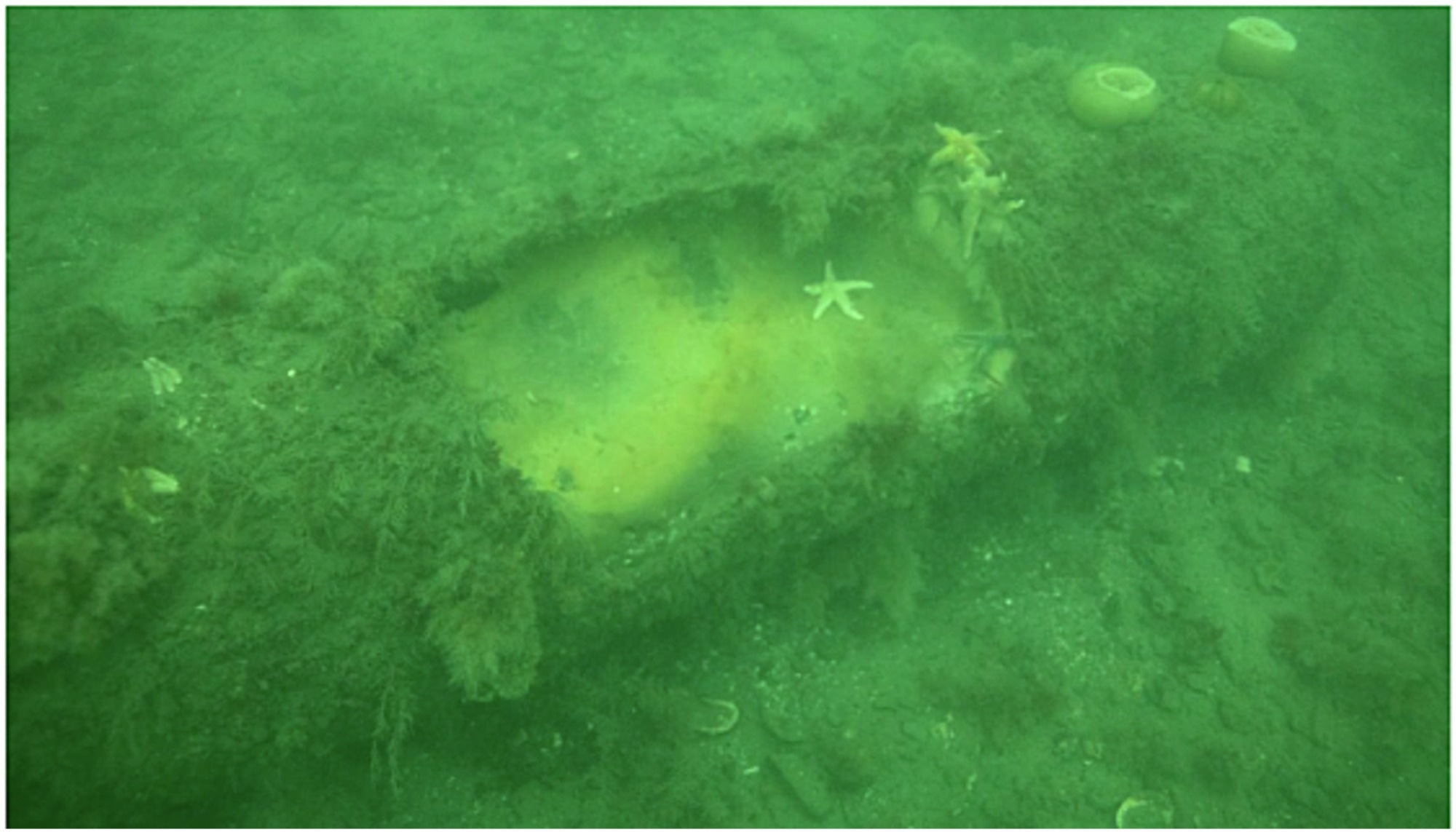Scientists at the National Physical Laboratory (NPL) have successfully tested new methods developed by UK industry to remove unexploded ordnance (UXO) on the seabed in a way that is considerably less harmful to marine life. The study compared newly developed methods for ordnance disposal with existing techniques and its findings have published in the latest edition of the journal, Marine Pollution Bulletin.
 A World War Two-era 340kg British Mk14 sea mine on the floor of the Baltic Sea. The pre-clearance survey shows heavy marine growth and the mine’s explosive contents exposed to the environment. Source: NPL
A World War Two-era 340kg British Mk14 sea mine on the floor of the Baltic Sea. The pre-clearance survey shows heavy marine growth and the mine’s explosive contents exposed to the environment. Source: NPL
The floors of the world’s oceans are littered with unexploded ordnance left over from World Wars One and Two and also from military exercises and tests. This ordnance poses a majorenvironmental and safety hazard to fishing vessels, maritime traffic and offshore developments such as windfarms. The current removal method, called high order detonation, presents a significant risk of injury or death to marine mammals and other fauna and also causes seabed craters.
In the first study of its kind, NPL scientists together with researchers from Loughborough University, Aarhus University in Denmark and staff from Aberdeen-based environmental consultancy Hartley-Anderson, conducted a series of experiments, including a field trial in the Baltic Sea, to compare the sound produced by high order detonations with that produced by “deflagration”, a low order disposal method developed by Chippenham-based ordnance disposal company Alford Technologies.
The results showed that the low order deflagration method produces substantially reduced radiated acoustic noise versus current disposal methods. Peak sound pressure level and sound exposure level underwater was more than 20 decibels (dB) lower than that created by existing methods - which represents a hundred times less energy released. These results are from unexploded ordnance up to 460 kg TNT equivalent in size and researchers predict that reductions could be significantly higher for larger charge sizes.
The Baltic Sea trial is the latest research conducted by the team in recent years to ensure the safer removal of unexploded ordnance on the seabed, and which is funded by the UK Govt’sOffshore Energy Strategic Environmental Assessment (SEA) programme. A previous study was conducted in the North Sea which analysed the acoustic measurements made during the disposal of 54 items of unexploded ordnance during the pre-construction phase of two offshore windfarms.
The NPL-led team have also developed a protocol for in-situ measurements of underwater sound generated during the disposal of unexploded ordnance. The protocol provides best practice to ensure accurate and effective monitoring of the underwater sound from UXO clearance.
Underwater ordnance disposal continues to be a high-profile issue in the UK. The NPL-led research has been cited in answers to several parliamentary questions and also in a Westminster Hall debate. It was also cited in last year’s joint interim policy statement on UXO clearance by BEIS and DEFRA (January 2022).
The NPL-led team is set to conduct further controlled tests on other potential new low orderUXO disposal techniques: and will also test additional barrier mitigation methods such as the use of bubble curtains.
Sei-Him Cheong, Senior Scientist at NPL, said: “This project is instrumental in addressing the UK offshore wind target. I am thrilled to be a part of this work and it is remarkable to witness every milestone we achieved. The benefits of the numerous collaborations and hardwork is bringing us closer to a clean and more sustainable future.”
John Hartley, Director at Hartley Anderson Ltd said: “The NPL-led research on the underwater sounds from UXO clearance has influenced policy and informed developer decisions, resulting in significantly reduced environmental harm, and thus facilitating the marine energy transition.”